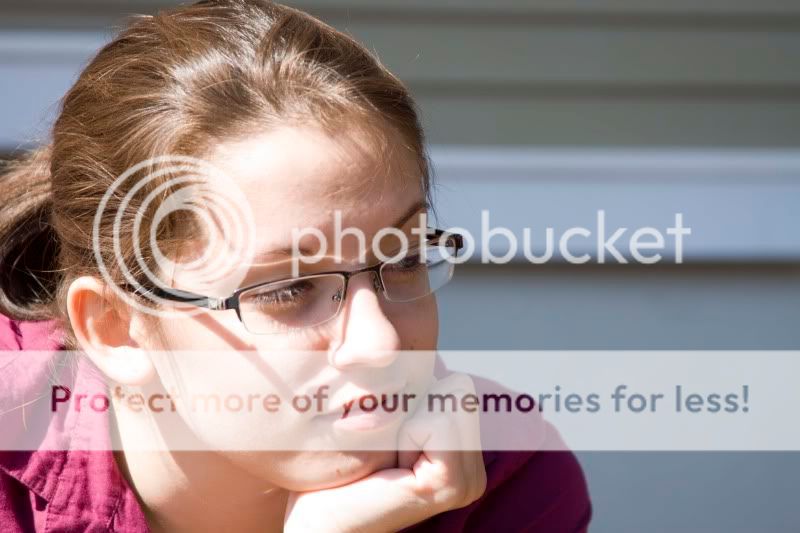Renol
TPF Noob!
- Joined
- Sep 25, 2009
- Messages
- 180
- Reaction score
- 2
- Location
- Chicago, IL
- Can others edit my Photos
- Photos OK to edit
Forgive me if this has been asked before. I couldn't find any threads that really addressed this concern of mine.
I know that the best time for outdoor shooting is during the "magic hours" of dawn and dusk. However, more often than not I find myself shooting for one thing or another during the middle of the day when the sun is at its worst. I seem to have a lot of trouble getting my exposures right. More often than not they're either too bright or too dark. I understand a little about light metering and often try to meter off the bright sections or have tried using the "brother blue sky" method as mentioned in the book everyone recommends about exposure (Understanding Exposure?). Unfortunately I still find myself correcting my mistakes in post.
Is there any advice or tricks I can learn to get better exposures? Also, when shooting in direct sunlight a certain amount of glare (not lens glare) and bright highlights is unavoidable. What are some good uses of this light? What I mean by that is are there times when it's ok to leave the spots where the light hits as bright provided the overall exposure is ok?
For a little more information I was outdoors at a family gathering for mother's day and had trouble shooting people who were often lit half and half. I had nothing but trouble making sure I was getting a balanced histogram vs a U shape or blown highlights.
Here's an example. In this case I spot metered off the shaded side of her face and even with -2/3 stop exposure I had some blown highlights and a few high spikes a little right of center on the histogram. As you can see the highlights on her face are pretty bright and a little blown in some areas and this is AFTER a little post processing. I've also included a link to the "before" photo for reference. I've tried matrix metering but at normal exposure the camera has a tendency to overexpose the majority of the image when there is a lot of sunlight on the subjects. With spot I tend to get slightly more reliable results but still have issues with getting decent exposures that aren't considerably under or over. Any advice would be appreciated.

http://i71.photobucket.com/albums/i155/lone_wolf025/365 Scraps/IMG_1873-1.jpg (unedited version)
Any suggestions on how to expose better in the future?
I know that the best time for outdoor shooting is during the "magic hours" of dawn and dusk. However, more often than not I find myself shooting for one thing or another during the middle of the day when the sun is at its worst. I seem to have a lot of trouble getting my exposures right. More often than not they're either too bright or too dark. I understand a little about light metering and often try to meter off the bright sections or have tried using the "brother blue sky" method as mentioned in the book everyone recommends about exposure (Understanding Exposure?). Unfortunately I still find myself correcting my mistakes in post.
Is there any advice or tricks I can learn to get better exposures? Also, when shooting in direct sunlight a certain amount of glare (not lens glare) and bright highlights is unavoidable. What are some good uses of this light? What I mean by that is are there times when it's ok to leave the spots where the light hits as bright provided the overall exposure is ok?
For a little more information I was outdoors at a family gathering for mother's day and had trouble shooting people who were often lit half and half. I had nothing but trouble making sure I was getting a balanced histogram vs a U shape or blown highlights.
Here's an example. In this case I spot metered off the shaded side of her face and even with -2/3 stop exposure I had some blown highlights and a few high spikes a little right of center on the histogram. As you can see the highlights on her face are pretty bright and a little blown in some areas and this is AFTER a little post processing. I've also included a link to the "before" photo for reference. I've tried matrix metering but at normal exposure the camera has a tendency to overexpose the majority of the image when there is a lot of sunlight on the subjects. With spot I tend to get slightly more reliable results but still have issues with getting decent exposures that aren't considerably under or over. Any advice would be appreciated.

http://i71.photobucket.com/albums/i155/lone_wolf025/365 Scraps/IMG_1873-1.jpg (unedited version)
Any suggestions on how to expose better in the future?








![[No title]](/data/xfmg/thumbnail/32/32812-c004ccede2969e280733ed1a4271ec1a.jpg?1734162500)

![[No title]](/data/xfmg/thumbnail/32/32810-094482c1ef1c76eae62a96107013a72e.jpg?1734162496)



